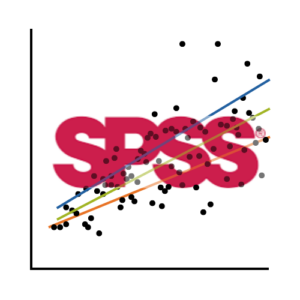 Regression is one of the most common analyses in statistics. Most of us learn it in grad school, and we learned it in a specific software. Maybe SPSS, maybe another software package. The thing is, depending on your training and when you did it, there is SO MUCH to know about doing a regression analysis in SPSS.
Regression is one of the most common analyses in statistics. Most of us learn it in grad school, and we learned it in a specific software. Maybe SPSS, maybe another software package. The thing is, depending on your training and when you did it, there is SO MUCH to know about doing a regression analysis in SPSS.
There are the general procedures everyone needs to know, the options that are important for testing assumptions and plotting results for reporting, and more.
And, perhaps most surprisingly, there are two totally different procedures for running linear regression in SPSS: Regression and General Linear Model. While you can get many of the same results from both of these, each procedure has different options, syntax, and there are unique benefits for each procedure.
Learning the ins and outs of these two procedures and their unique benefits will help you make the right decisions for your data analysis.
This 3-session tutorial, we will cover:
- Running linear regression using the Regression procedure and interpreting the output
- Running linear regression using the GLM procedure and interpreting the output
- General procedures everyone needs to know such as testing assumptions and plotting results for reporting
- What to know when choosing which SPSS regression procedure is right for your research question
- And more!
Note: This training is a benefit to members of the Statistically Speaking Membership Program and part of the Stat’s Amore Trainings Series.
About the Instructor
You'll get access to this training webinar, 130+ other stats trainings, a pathway to work through the trainings that you need — plus the expert guidance you need to build statistical skill with live Q&A sessions and an ask-a-mentor forum.


